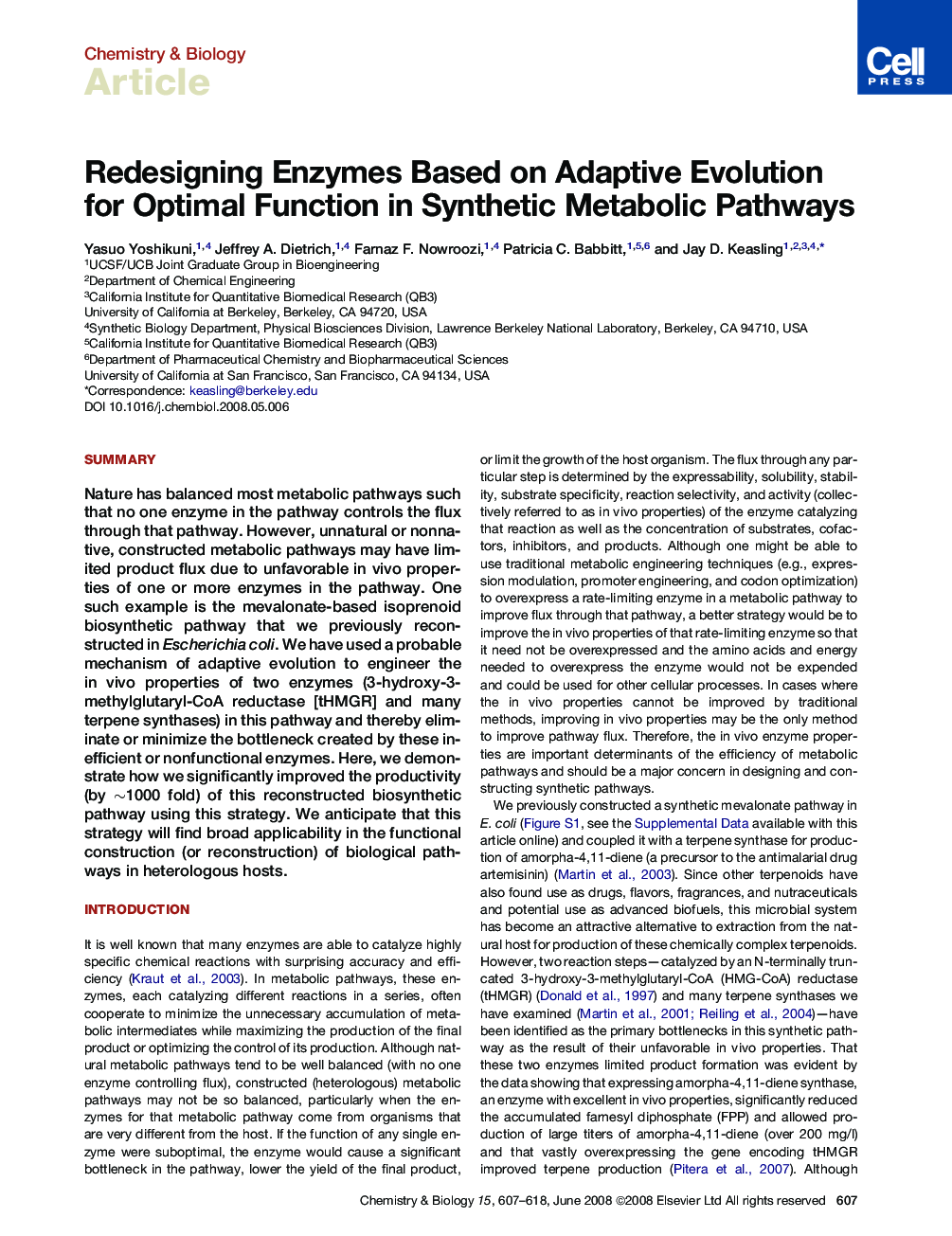| Article ID | Journal | Published Year | Pages | File Type |
|---|---|---|---|---|
| 1391687 | Chemistry & Biology | 2008 | 12 Pages |
SummaryNature has balanced most metabolic pathways such that no one enzyme in the pathway controls the flux through that pathway. However, unnatural or nonnative, constructed metabolic pathways may have limited product flux due to unfavorable in vivo properties of one or more enzymes in the pathway. One such example is the mevalonate-based isoprenoid biosynthetic pathway that we previously reconstructed in Escherichia coli. We have used a probable mechanism of adaptive evolution to engineer the in vivo properties of two enzymes (3-hydroxy-3-methylglutaryl-CoA reductase [tHMGR] and many terpene synthases) in this pathway and thereby eliminate or minimize the bottleneck created by these inefficient or nonfunctional enzymes. Here, we demonstrate how we significantly improved the productivity (by ∼1000 fold) of this reconstructed biosynthetic pathway using this strategy. We anticipate that this strategy will find broad applicability in the functional construction (or reconstruction) of biological pathways in heterologous hosts.
